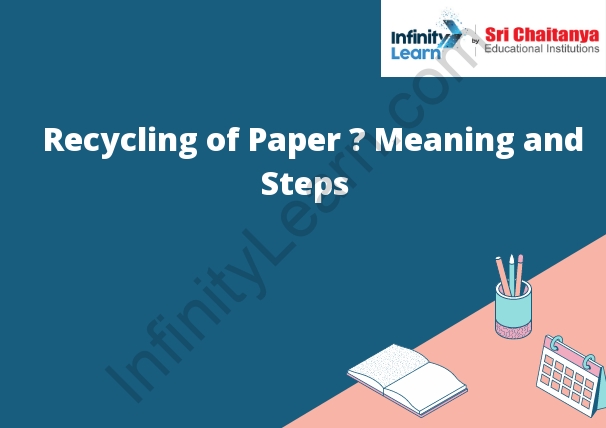Table of Contents
Recycle Meaning:
The recycling process takes used materials and transforms them into new products. Recycling helps reduce the amount of waste sent to landfills and incinerators, and it also conserves energy and natural resources.
Recycling is the process of converting waste materials into new materials or products. It is an important way to reduce the amount of waste that is sent to landfills and incinerators. Recycling can also help save energy and reduce greenhouse gas emissions.
There are many reasons to recycle. Recycling helps to conserve natural resources such as timber, water and minerals. It also helps to reduce pollution and save energy. Recycling is important because it helps to keep our environment clean and healthy.
There are many different materials that can be recycled. Some of the most common materials that are recycled include aluminum cans, glass bottles, plastic bottles and cardboard.
There are many ways to recycle materials. Some of the most common ways to recycle include recycling bins, curbside collection and drop-off centers.
Recycling is important because it helps to keep our environment clean and healthy. It is a simple way to reduce our environmental impact and help preserve our natural resources.

Recycling of Paper
The recycling of paper is the process of turning used paper into new paper products. This is done by breaking down the paper into its component parts, which are then separated and cleaned. The separated parts are then reformed into new paper products.
Using recycled paper to make new paper reduces the number of trees that are cut down, conserving natural resources. In some instances, recycling services are cheaper than trash-disposal services. Recycling paper saves landfill space and reduces the amount of pollution in the air from incineration.
There are many reasons why recycling paper is important. It saves trees, it reduces pollution, and it conserves energy.
When paper is recycled, it is made into new paper products. This means that less virgin paper needs to be produced, which saves trees. Paper production is a major source of pollution, so recycling reduces air and water pollution. Recycling also conserves energy. It takes less energy to recycle paper than it does to produce new paper from scratch.
There are many ways to recycle paper. You can recycle paper at home by using a paper shredder or a paper recycler. You can also recycle paper at work or at school. Many cities have recycling programs that include paper.
Recycling paper is important because it saves trees, reduces pollution, and conserves energy. It is easy to do and everyone can participate.
Steps of Recycling Paper
1. Collect paper for recycling from schools, businesses and households.
2. Sort the paper by type into large containers.
3. Transport the sorted paper to a recycling plant.
4. Separate the paper fibers using screens and magnets.
5. Clean the fibers using water and chemicals.
6. Dry the fibers in a large oven.
7. Pack the fibers into bales for shipping to manufacturers.
Advantages of recycling paper
There are many advantages of recycling paper. One of the most important is that recycling paper saves trees. When people recycle paper, it is made into new paper products instead of new lumber products. This means that less trees need to be cut down to make paper products, which is better for the environment.
Another advantage of recycling paper is that it saves energy. Recycling paper takes less energy than creating new paper from scratch. This is because the recycling process uses less electricity and produces fewer emissions than making new paper.
Finally, recycling paper also helps to reduce the amount of waste that ends up in landfills. Paper is one of the most common materials that is thrown away, but it can be recycled over and over again. By recycling paper, we can reduce the amount of waste that ends up in landfills and help to preserve our natural resources.
Before throwing that piece of paper in the trash, consider how many trees you could save by starting a recycling program in your office or school. Even recycling newspapers and paper products at home can generate neighborhood interest and help save the earth. The advantages of recycling paper go far beyond saving trees and can start with a single piece of paper.
Benefits of recycling paper
It is well known that recycling is important for the environment. By recycling paper, we can reduce the amount of trees that are cut down each year. In addition, recycling paper conserves energy and reduces pollution.
When paper is recycled, it is turned into new paper products. This means that fewer trees need to be cut down to produce new paper. In addition, recycling paper requires less energy than producing new paper from scratch. Recycling also reduces the amount of pollution that is created in the paper-making process.
There are many benefits to recycling paper. By recycling paper, we can help preserve our environment and reduce the amount of pollution that is created each year.
- Recycling paper has several benefits both for humans and the earth. Using recycled paper to make new paper reduces the number of trees that are cut down, conserving natural resources. In some instances, recycling services are cheaper than trash-disposal services. Recycling paper saves landfill space and reduces the amount of pollution in the air from incineration. Businesses can promote a positive company and community image by starting and maintaining a paper-recycling program. Parents can promote a clean environment and a healthy lifestyle to their children by teaching them about the benefits of recycling paper.
- Recycling starts with people in their homes, schools and businesses collecting used paper and putting it out for collection. After paper is collected by a recycling company, it is transferred to a recycling center or material-recovery facility, where the paper is sorted by grades and where contaminants — such as glass, metals and plastic — are removed. Once sorted the paper is compacted into large bales and sent to the paper mill. At the paper mill, the paper fibers are shredded and mixed with water to make a pulp. It is then washed, refined and cleaned and made into slush with a beater. From this point, the paper-making process is the same for recycled paper or new fibers.







